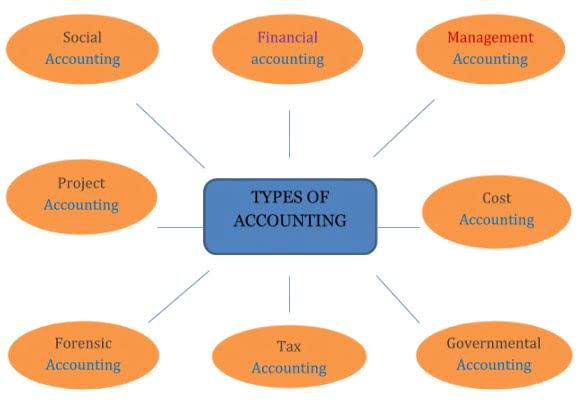
Calculate average inventory, inventory turnover ratio and average selling period for 2022. When interpreting the inventory turnover ratio, it’s crucial to consider industry benchmarks and trends. What may which of the following factors are used in calculating a companys inventory turnover? be considered a healthy turnover ratio in one industry could be below average in another.
- Inventory turnover is a crucial metric that assesses how effectively a company manages its inventory by measuring the number of times inventory is sold or used in a given period.
- The reporting period for the report is determined by the First Month and Last Month report prompts.
- We plan to cover the PreK-12 and Higher Education EdTech sectors and provide our readers with the latest news and opinion on the subject.
- Ongoing inventory management is essential for maintaining a healthy turnover rate.
What is Considered a Good Inventory Turnover Ratio
- It’s an important factor for companies to ensure they can meet customer demand and minimize inventory holding costs.
- We hope to provide a well-rounded, multi-faceted look at the past, present, the future of EdTech in the US and internationally.
- A higher ratio generally indicates strong sales and efficient inventory management, while a low inventory turnover ratio shows that improvements are needed.
- Regular calculations help monitor performance, adjust inventory levels, and improve cash flow management.
Depending on the product, stock may also expire or become obsolete if held too long in storage. Alternatively, understocking with inadequate inventory on hand might lead to issues like dissatisfied customers and lost sales. After all, high inventory turnover reduces the amount of capital that they have tied up in their inventory. It also helps increase profitability by increasing revenue relative to fixed costs such as store HOA Accounting leases, as well as the cost of labor. In some cases, however, high inventory turnover can be a sign of inadequate inventory that is costing the company potential sales.
Tested solutions for every industry
The score may be more accurate if the user purchases inventory in advanced to increase the profit margin/markup. The Score is calculated by dividing the Turnover Ratio by the %Margin/Markup. You must first determine the cost of the goods available for sale by adding up the inventory you’re starting with and what the company has purchased during the specified period. From that number, subtract the inventory remaining after that same period has completed, and that’s your cost of goods sold.
Inventory turnover ratio (ITR)

A higher inventory ratio is usually better, although there may also be downsides to a high turnover. A company can improve its inventory turnover ratio by optimizing stock levels, reducing overstock, and increasing sales. Another factor that could possibly affect the inventory turnover ratio is the use of just-in-time (JIT) inventory management method. Companies employing JIT system may have a higher ITR than others that don’t practice JIT. The reason is that such companies generally have much lower inventory balances to report on their balance sheet as compared to those that just rely on traditional approaches of inventory restocking. Similarly, a shortage of inventory in stock may also temporarily rise the firm’s inventory turnover ratio.
It also involves monitoring customer unearned revenue demands to appropriately adjust inventory purchases depending on sales forecasting and data interpretation. To avoid these common pitfalls and streamline inventory management processes, businesses can leverage technology solutions such as Cleverence, a mobile workflow automation software. Cleverence empowers businesses to automate inventory tracking, streamline workflows, and eliminate manual errors, thereby enhancing inventory accuracy and efficiency. By digitizing inventory management processes and providing real-time insights, Cleverence enables businesses to optimize inventory turnover and drive operational excellence. Investing in inventory management software and systems (example Cleverence) that provide real-time visibility into inventory levels, movements, and trends can enhance inventory control and turnover.

Inventory Turnover Ratio: What It Is, How It Works, and Formula

A high inventory turnover ratio indicates efficient inventory management, faster sales, and reduced holding costs. Effective inventory management strategies are systems put into place to plan, control, and monitor the company’s inventory levels. This may include strategies like just-in-time inventory management, inventory optimization, and supply chain management.
Segmenting inventory based on demand patterns, product characteristics, and customer preferences can facilitate more targeted inventory management strategies. Differentiating between fast-moving, slow-moving, and seasonal items allows businesses to allocate resources more efficiently and improve inventory turnover. VMI programs involve suppliers assuming responsibility for managing inventory levels at customer locations. By allowing suppliers to monitor and replenish inventory based on real-time demand data, businesses can reduce excess inventory, minimize stockouts, and improve inventory turnover. Accurate demand forecasting is essential for preventing stockouts and overstocking.

The inventory turnover ratio measures how often inventory is sold and replaced over a period. Seasonal variations also impact inventory turnover and can lead to misconceptions. For businesses with seasonal products, turnover ratios can fluctuate significantly throughout the year. A low ratio during the off-season might be expected, while a high ratio during peak seasons might not be sustainable year-round. Using an inventory turnover ratio calculator can help account for these seasonal changes, providing a more accurate picture of your inventory performance over time.

Reports for a limited month range can be useful to review inventory turnover for a specific season.

